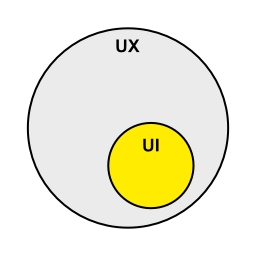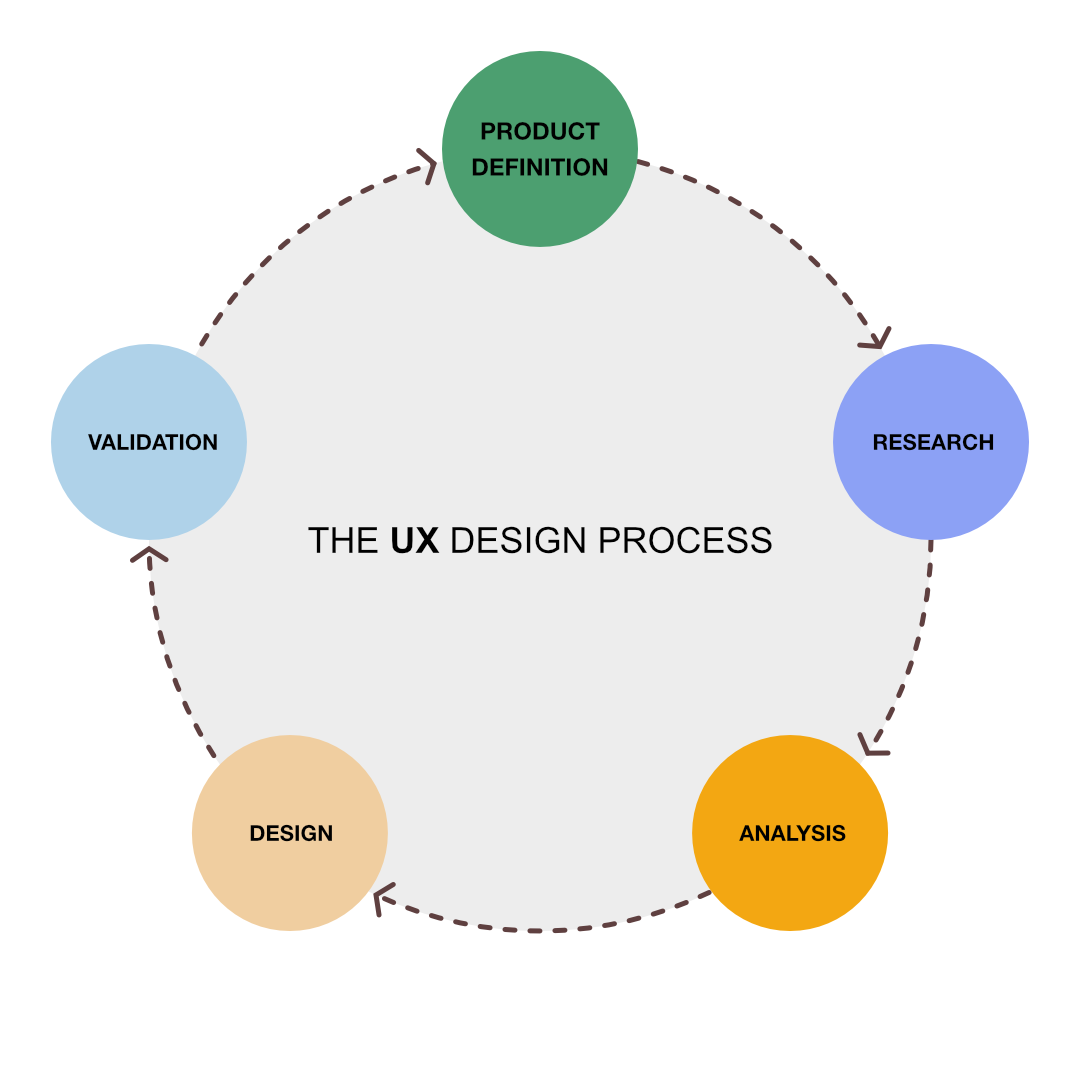UX > UI
Yes, your user experience is greater than your user interface. Your product is more than a beautiful UI or some nice theme, it’s about enabling the user to reach his goals with less friction.

Empowering your user, teaching him, and enabling him yields a great user experience and a great product. The more you invest in your user experience, the more happy and loyal your user becomes.
UI is one facet of the whole experience, UI is not the whole user experience.
How to define both UI and UX?
UI is about the screens displayed to the user. With all sorts of controls like texts, buttons, lists, text edits, checkboxes, etc. It might include the sounds played when the user interacts with certain elements, or the subtle visual effects to get user attention.
UX is about thinking and improving all touch points for the whole user journey with your product or service.
A good example is an e-commerce website:
- A user visits your website, and makes an order.
- You send him a series of emails informing him about his order and delivery status.
- Once the product arrives, you use a nice package and include some documentation.
- Once the user needs more assistance, he can contact your support team.
UX covers all four touch points while UI only deals with point 1 and maybe point 4 to some extent.
The UX design process
Now that you have an idea about UX and UI, and where each fit in the big picture, let’s talk about how to make a good UX.
UX design has a process (See image below):

1. Product definition
You start the UX design process by brainstorming about the concept of the product and what problems it solves. You need to interview key stakeholders to gain insights about their problems, then define how your product solves these problems.
This is done at high level in order to get started and have a good understanding of where you are heading.
2. Research
Once you have an initial idea about your product, you need to conduct a more advanced research by expanding the interviews to more stakeholders, learn more about the target niche or market for the product, check if there are competitors, and how to make your product standout.
You need to collect data to use it for the next step.
3. Analysis
Data collected in the research step serves to create personas representing end users of your product. It also serves to create user stories to define how a certain user/persona will interact with your product.
A user story has this structure:
As a [user] I want to [goal] so that [motivation]
Note that having user stories helps creates a requirements list for executing your project later on.
4. Design
Once you have your list of personas and user stories, then you start designing the product itself.
You might want to create a simple UI prototype, or maybe you can go as far as building an MVP with custom code. It really depends on the nature of your product, and what learnings you want to acquire.
And as discussed earlier, this is where UI fits into the picture. It is a channel to enable users progress in their user stories.
5. Validation
You use your prototype or MVP to learn more about your product and end users. You need to gather feedback from users by either using embedded data analytics tools, and/or or by interviewing users or watching them while they interact with your product.
Learnings from this step will help you improve your product by:
- Dropping useless features which no user cares about.
- Fixing bad features which users struggle with.
- Adding missing features which users find necessary to be productive with your product.
Final thoughts
You might have noticed that building a startup product is aligned with the UX design process, you might even say that they are the same process. You are right they actually overlap!
A startup is all about learning from end users, and seeing what works and what doesn’t, the same is true for UX, you want to learn how to make a product which appeals to its target end users and how to solve their problems with it.
UX done correctly is a sure way to deliver great value for your end users, and helps build a trust relationship with them.
I hope that you learned the difference between UX and UI, where UI sits, and what UX aims for.
 Mourad HAMOUD
Mourad HAMOUD